Curate, connect, and discover
Allwomanspacewalk - Blog Posts
Women in Exploration: From Human Computers to All-Woman Spacewalks

Since the 19th century, women have been making strides in areas like coding, computing, programming and space travel, despite the challenges they have faced. Sally Ride joined NASA in 1983 and five years later she became the first female American astronaut. Ride's accomplishments paved the way for the dozens of other women who became astronauts, and the hundreds of thousands more who pursued careers in science and technology. Just last week, we celebrated our very first #AllWomanSpacewalk with astronauts Christina Koch and Jessica Meir.
Here are just a couple of examples of pioneers who brought us to where we are today:
The Conquest of the Sound Barrier

Pearl Young was hired in 1922 by the National Advisory Committee for Aeronautics (NACA), NASA’s predecessor organization, to work at its Langley site in support in instrumentation, as one of the first women hired by the new agency. Women were also involved with the NACA at the Muroc site in California (now Armstrong Flight Research Center) to support flight research on advanced, high-speed aircraft. These women worked on the X-1 project, which became the first airplane to fly faster than the speed of sound.
Young was the first woman hired as a technical employee and the second female physicist working for the federal government.
The Human Computers of Langley

The NACA hired five women in 1935 to form its first “computer pool”, because they were hardworking, “meticulous” and inexpensive. After the United States entered World War II, the NACA began actively recruiting similar types to meet the workload. These women did all the mathematical calculations – by hand – that desktop and mainframe computers do today.
Computers played a role in major projects ranging from World War II aircraft testing to transonic and supersonic flight research and the early space program. Women working as computers at Langley found that the job offered both challenges and opportunities. With limited options for promotion, computers had to prove that women could successfully do the work and then seek out their own opportunities for advancement.
Revolutionizing X-ray Astronomy

Marjorie Townsend was blazing trails from a very young age. She started college at age 15 and became the first woman to earn an engineering degree from the George Washington University when she graduated in 1951. At NASA, she became the first female spacecraft project manager, overseeing the development and 1970 launch of the UHURU satellite. The first satellite dedicated to x-ray astronomy, UHURU detected, surveyed and mapped celestial X-ray sources and gamma-ray emissions.
Women of Apollo
NASA’s mission to land a human on the Moon for the very first time took hundreds of thousands workers. These are some of the stories of the women who made our recent #Apollo50th anniversary possible:

• Margaret Hamilton led a NASA team of software engineers at the Massachusetts Institute of Technology and helped develop the flight software for NASA’s Apollo missions. She also coined the term “software engineering.” Her team’s groundbreaking work was perfect; there were no software glitches or bugs during the crewed Apollo missions.
• JoAnn Morgan was the only woman working in Mission Control when the Apollo 11 mission launched. She later accomplished many NASA “firsts” for women: NASA winner of a Sloan Fellowship, division chief, senior executive at the Kennedy Space Center and director of Safety and Mission Assurance at the agency.
• Judy Sullivan, was the first female engineer in the agency’s Spacecraft Operations organization, was the lead engineer for health and safety for Apollo 11, and the only woman helping Neil Armstrong suit up for flight.
Hidden Figures
Author Margot Lee Shetterly’s book – and subsequent movie – Hidden Figures, highlighted African-American women who provided instrumental support to the Apollo program, all behind the scenes.

• An alumna of the Langley computing pool, Mary Jackson was hired as the agency’s first African-American female engineer in 1958. She specialized in boundary layer effects on aerospace vehicles at supersonic speeds.
• An extraordinarily gifted student, Katherine Johnson skipped several grades and attended high school at age 13 on the campus of a historically black college. Johnson calculated trajectories, launch windows and emergency backup return paths for many flights, including Apollo 11.
• Christine Darden served as a “computress” for eight years until she approached her supervisor to ask why men, with the same educational background as her (a master of science in applied mathematics), were being hired as engineers. Impressed by her skills, her supervisor transferred her to the engineering section, where she was one of few female aerospace engineers at NASA Langley during that time.
Lovelace’s Woman in Space Program

Geraldyn “Jerrie” Cobb was the among dozens of women recruited in 1960 by Dr. William Randolph "Randy" Lovelace II to undergo the same physical testing regimen used to help select NASA’s first astronauts as part of his privately funded Woman in Space Program.
Ultimately, thirteen women passed the same physical examinations that the Lovelace Foundation had developed for NASA’s astronaut selection process. They were: Jerrie Cobb, Myrtle "K" Cagle, Jan Dietrich, Marion Dietrich, Wally Funk, Jean Hixson, Irene Leverton, Sarah Gorelick, Jane B. Hart, Rhea Hurrle, Jerri Sloan, Gene Nora Stumbough, and Bernice Trimble Steadman. Though they were never officially affiliated with NASA, the media gave these women the unofficial nicknames “Fellow Lady Astronaut Trainees” and the “Mercury Thirteen.”
The First Woman on the Moon

The early space program inspired a generation of scientists and engineers. Now, as we embark on our Artemis program to return humanity to the lunar surface by 2024, we have the opportunity to inspire a whole new generation. The prospect of sending the first woman to the Moon is an opportunity to influence the next age of women explorers and achievers.
This material was adapted from a paper written by Shanessa Jackson (Stellar Solutions, Inc.), Dr. Patricia Knezek (NASA), Mrs. Denise Silimon-Hill (Stellar Solutions), and Ms. Alexandra Cross (Stellar Solutions) and submitted to the 2019 International Astronautical Congress (IAC). For more information about IAC and how you can get involved, click here.
Make sure to follow us on Tumblr for your regular dose of space: http://nasa.tumblr.com
First All-Woman Spacewalk
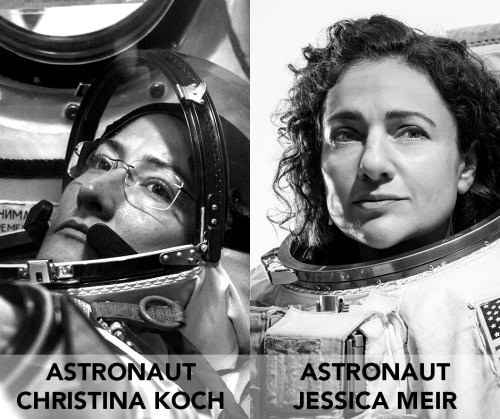
NASA astronauts and best friends, Christina Koch and Jessica Meir, made history Friday, October 18, 2019, by conducting the first all-woman spacewalk outside the International Space Station (ISS)! The Expedition 61 flight engineers ventured into the vacuum of space at 7:38 a.m. EDT to swap out a failed power controller that regulates the batteries used to collect and distribute power to the orbital laboratory – a task that took a total of seven hours and 17 minutes to complete.
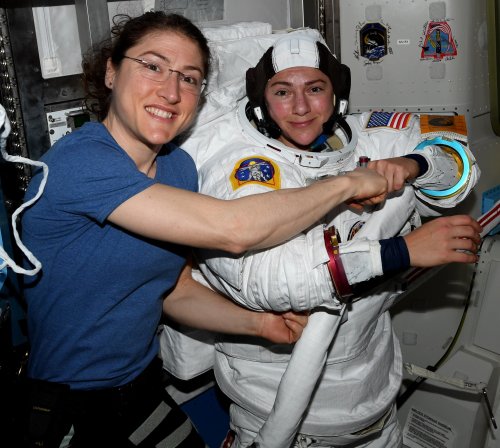
This was Koch’s fourth spacewalk and Meir’s first. Both women, selected as astronaut candidates in 2013, are on their first trip to work and live aboard the space station. Meir will be the 15th woman to spacewalk, and the 14th U.S. woman.
Get to know the astronauts
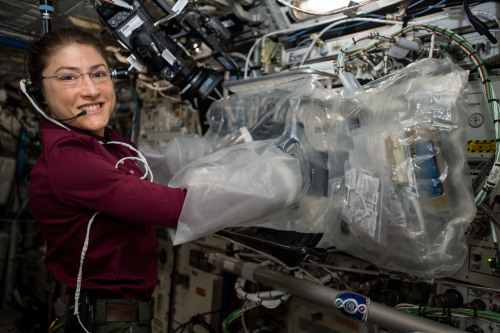
In addition to being an astronaut, Christina Koch is an engineer and physicist. Her career has taken her to extreme parts of the planet to conduct scientific field missions in places like the Antarctic South Pole and Greenland’s Summit Station. Prior to being selected as an astronaut candidate in 2013, she worked as an Electrical Engineer at our Goddard Space Flight Center’s Laboratory for High Energy Astrophysics.
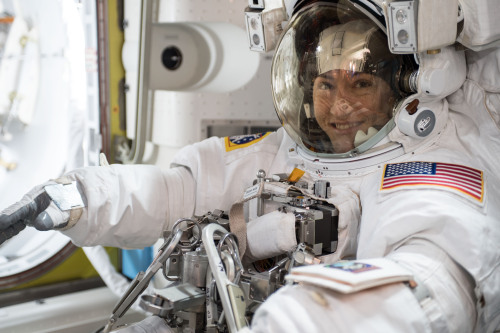
Koch left Earth on March 14, 2019, and is slated to set a record for the longest single spaceflight by a woman with an expected total of 328 days in space. Her extended mission will provide researchers the opportunity to observe the effects of long-duration spaceflight on a female body in preparation for human missions to the Moon and Mars.
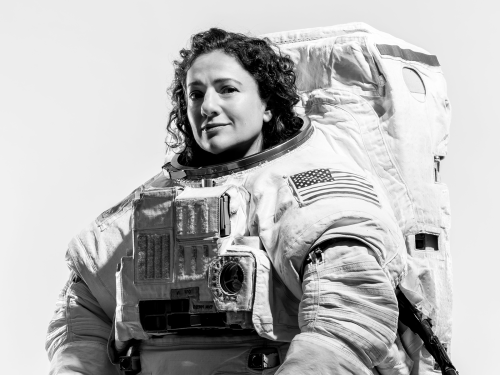
Jessica Meir dreamed of the day she would make it to space since the age of five. That dream became a reality on Wednesday, Sept. 25, 2019 as she left Earth on her first spaceflight – later floating into her new home aboard the International Space Station.
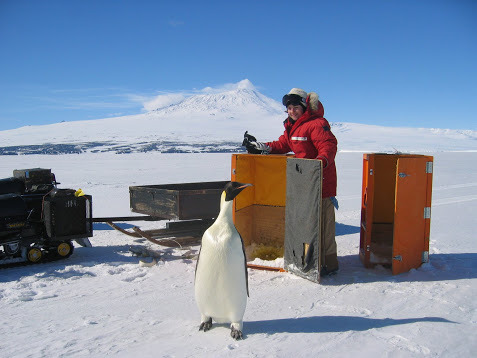
While Meir’s new home is more than 200 miles over the Earth, she is no stranger to extreme environments. She studied penguins in Antarctica and mapped caves in Italy – both of which prepared her for the ultimate extreme environment: space.
#AllWomanSpacewalk, what’s the deal?
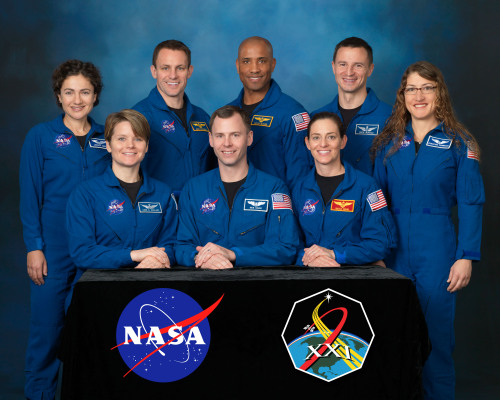
The all-woman spacewalk wasn’t something we purposefully planned; it is a testament to the increasing number of female astronauts in the space program. For example, Koch’s and Meir’s 2013 class of astronaut candidates was 50 percent women!
When asked in an interview about the importance of conducting her mission and this spacewalk, Koch said,
“In the end, I do think it’s important, and I think it’s important because of the historical nature of what we’re doing. In the past women haven’t always been at the table. It’s wonderful to be contributing to the space program at a time when all contributions are being accepted, when everyone has a role. That can lead in turn to increased chance for success. There are a lot of people who derive motivation from inspiring stories of people who look like them, and I think it’s an important story to tell.”
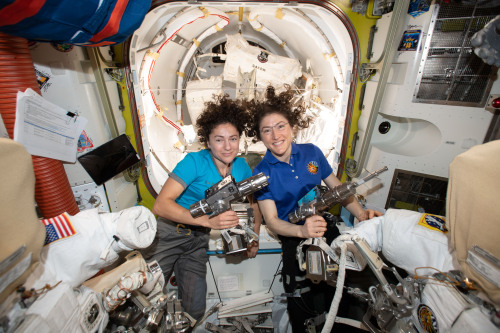
It’s important to note that spacewalks are not easy; astronauts typically describe them as the most physically challenging thing they do. Assignments are made on the basis of which astronauts are the best prepared to accomplish the tasks at hand under the conditions at the time. Today, Koch and Meir were the top astronauts for the job.
Women are no stranger to spacewalks!

While this was the first spacewalk to be conducted entirely by women, women are no strangers to spacewalks. Exactly 35 years and one week ago, Kathryn Sullivan (pictured above) made her own historic debut as the first U.S. woman to conduct a spacewalk. Since then, a total of 14 women (15 including Jessica) have ventured into the vacuum of space on 40 different spacewalks. Former Astronaut Peggy Whitson performed a record number of 10! From Astronauts to mission directors, women have been making their mark at the agency for decades now. A few of our recent pioneers are:
Astronaut Kate Rubins: First person to sequence DNA in space
Astronaut Peggy Whitson: First woman to command the ISS
Sandra Cauffman: Director of our Earth Science’s Division
Nicola Fox: Director of our Heliophysics Division
Lori Glaze: Director of our Planetary Science Division
Coming soon: The first woman to walk on the Moon
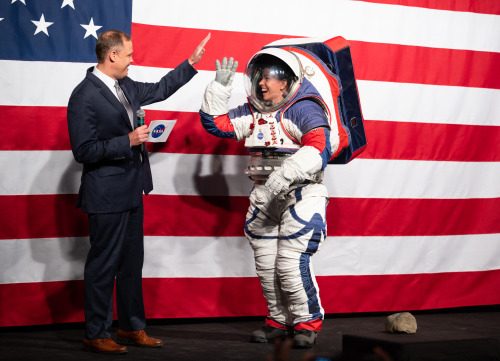
The first all-woman spacewalk is a milestone worth noting and celebrating as we look forward to putting the first woman and the next man on the Moon by 2024 with our Artemis lunar exploration program. With today’s historic event, we once again set a precedence for women to lead in space exploration.
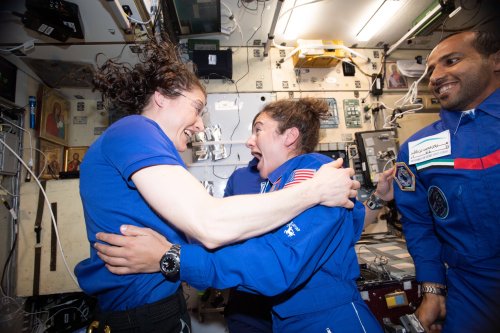
We hope achievements such as this provide inspiration to you all around the world, proving that hard work can lead you to great heights. This is not just a historic day for NASA, but a moment we can all feel proud of.
Didn’t have time to tune in? Check out the replay, here. Koch was wearing the spacesuit with red stripes, while Meir’s had no stripes.
If you’d like to keep up with Christian Koch and Jessica Meir’s work 254 miles above planet Earth, follow them on Twitter at @Astro_ Christina and @Astro_Jessica.
Be sure to follow us on Tumblr for your regular dose of space: http://nasa.tumblr.com